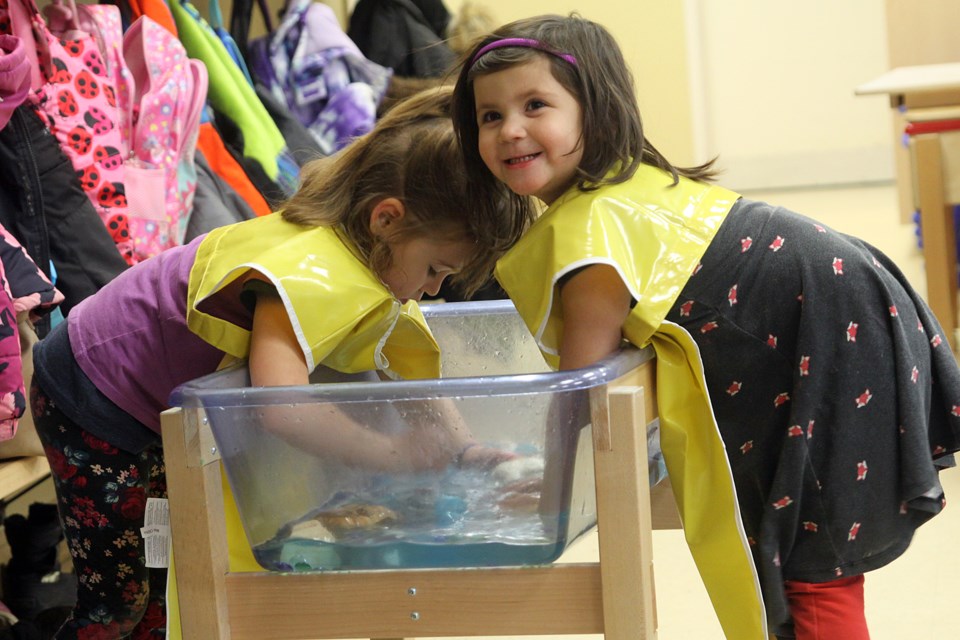FORT WILLIAM FIRST NATION, Ont. – Tatianna Pelletier enjoys where she goes to school.
“Playing with my friends and art,” she said, when asked about her favourite things to do at school, pointing out her four best friends in her class.
The senior kindergarten student is one of 14 Fort William First Nation children going to school in their home community through a partnership with the Thunder Bay Catholic District School Board. The two-year pilot project has full-day kindergarten operating as a satellite location of St. Ann School at the Fort William First Nation community centre, with the board providing the teacher and support staff.
As the classroom bustles with activity as students paint, play and make crafts, teacher Kimberly John said it’s been a great start to the school year.
“The community has been so supportive. From what I understand the parents just love the idea of being able to bring their children to the community rather than going on that big long highway,” John said on Wednesday.
“It’s just been wonderful. The children are growing. They are developing.”
Half a century has passed since the community's school was shuttered, leaving their youth with no option but go into Thunder Bay.
Phil Pelletier, a Fort William First Nation councillor and Catholic school board trustee, said the program has the support of the community’s chief and council and so far seems to be a success.
“We want our kids to learn our culture and our history,” Pelletier said. “Then we can send them off to the school in the city. We don’t want to segregate our kids but we want to give them the foundation of what it is being Aboriginal.”
Pelletier said the pilot will be evaluated later on to determine if it can be expanded, with the possibility of including primary grades.
Having the school within Fort William gives it a community feel, John said, adding parents are able to drop in and it’s common for grandparents to come at the end of the day to pick up other children to drop them off.
“A lot of our students, they do know each other so they play with each other after school so they have a close-knit bond between them,” John said. “They really are growing together.”
Pelletier said the closer proximity makes it easier for family members to participate in the children’s education.
“It’s a great opportunity for the kids and for the community to see what their kids are doing and maybe be more involved,” Pelletier said. “Sending them to the city, it’s hard for us to be involved with our kids in the school.”
When the project was announced in January, school board officials said up to 30 students could be accommodated. Despite only having half in its first year, John doesn’t see that as a bad thing.
“It makes us more available to give that attention,” she said. “It makes us more available to support conflict and help some of those children who do have difficulties emotionally. We’re able to be there to support them, a better program for them, more one-on-one programming.”
John, who previously taught at St. Jude School, said she teaches the same way she would any other kindergarten class with a focus on early childhood education principles that focus on physical, emotional and fine motor skills development.
But having the school at Fort William allows cultural teachings to be delivered more effectively, she added.
“It’s much easier for elders to come to visit us here and to provide teachings,” John said, adding the smaller group also helps. “It’s really difficult when you have those larger groups of 20 or more. Elders really appreciate the smaller group to get their message across.”
